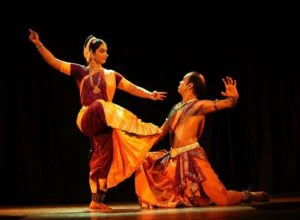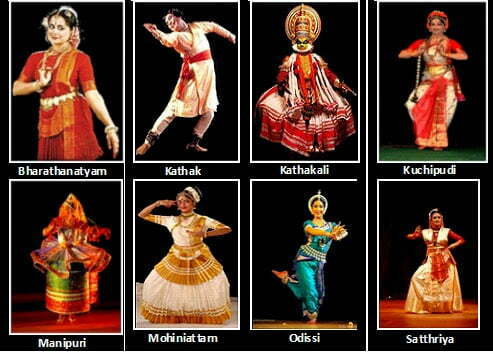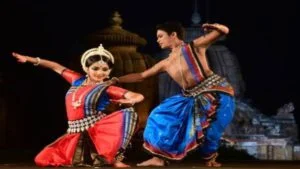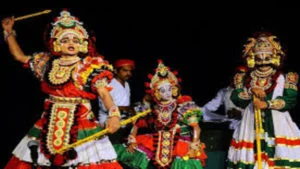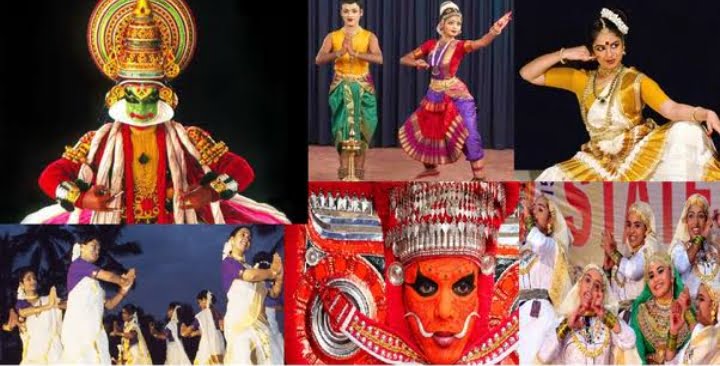Dance is an artistic manifestation of emotions or a nonverbal form of communication. Dances had indeed flourished in the ancient epoch about 9000 years ago, according to the remains of Bhimbetka rocks.It had played a significant role in religious rituals and festivities.Today, we find Folk dances over the world. The Maharashtra form depicts the region’s traditional way of life in regionally specific costumes and jewellery.
Folk dances are a part of every occasion, whether it is the start of a new season, a festival, a child’s birth, or a wedding ceremony.
Maharashtra boasts a diverse range of dance genres thanks to its rich history and customs. Povada is a dance genre that celebrates Shivaji Maharaj’s lifetime achievements as a Maratha monarch. Further, the Maharashtrians entertain themselves by the enchanting music and rhythmic movements of the Lavani and Koli dance genres.
The Dhangars of Sholapur do the Dhangri Gaja dance to honour their God. Dindi and Kala are religious folk dances that represent Lord Krishna’s devotional ecstasy. Tamasha is a popular folk dance that is performed throughout the state.
Dhangari Gaja
Dhangarior Dhanagri Gaja is a bright and unique Maharashtra traditional folk dance. It is a beautiful dancing troupe made up of buffalo keepers, shepherds, cowherds, and blanket weavers from Maharashtra’s Sholapur area.
Every male participates in this popular Maharashtra classical dance in order to receive the divine blessing of Biruba God. They have a distinct style of apparel that comprises Dhoti, Angarakha, Petha, and bright handkerchiefs, which they wear while dancing. Shepherds make up the majority of the population, and they typically clothe in traditional Marathi garb, which gives them a bright and distinct appearance. They dance to the beat of drums, and they do it for joy, happiness, and a long and healthy life for themselves and their cattle.
In Maharashtra, people who work in the animal husbandry industry are referred to as Dhangars. Dhangar is derived from the term Dhenu, which means cow. These people worship the god Biruba and perform this dance style as a kind of worship in order to get blessings of health and cattle, as their livelihood and survival are based on it.
Check out a performance of Dhangari Gaja by the local folks.
Dindi
Dindi is a Maharashtra classical dance that is performed as a statement of religious ecstasy. In this fascinating dance genre, participants form circles and swing to the rhythm of a drum called a ‘dindi.’ The dance that takes its name from a drum-like instrument played to the rhythms of the drum. It’s a devotional dance form in which the tale mainly revolves around Lord Krishna’s mischief.The chorus leader usually sings at the circle’s middle. In the centre of the circle, the drummer also stands. The tone and beats increase as the dance progresses, and the performers stamp their feet in various formations.
Dindi is frequently done by a group of male dancers in unusual forms, often in circles. On occasion, women are also a part of the group. These dancers are usually arranged in two rows, each facing the other. Versus and poetry are essential elements of the dance style.
Kala
The utilisation of props while the Maharashtra classical dance is in action is worth mentioning. The only item that acts as a prop is really a pot. The dancers bounce around in pleasure, whirling poles and swords, symbolising the ceremonial opening of the religious festival as the curd spills over from the pot. Consequently, the dance performers dress up in a variety of outfits. For instance, Saffron, green, and white are common colours for these vibrant outfits. It also involves the use of sticks.
Lord Krishna’s merriment is also reflected in the Kala dance. The main attractions of this dancing form are the beat and the rhythm. With other dancers on their shoulders, a group of dancers construct a double-tiered circle. A man cracks the pot and splatters curds all over the dancers’ nude torsos. After this ceremonial opening, the dancers spin sticks and swords in a frenetic battle dance. Dancers construct a double tiered circle, swaying to the beat of drums, expressing their reverence for Lord Krishna. As the dancer at the top of the tier tries to break the pot, the religious fervour is at an all-time high.
The dancer struts to the religious tunes and keep on continuing even when the curd from the broken pot spills on their torsos. This dance form has a sheer elegance. And it has transformed into a major religious gathering and attracts large crowds from all parts of the state.
Lavani
Now comes the most famous and well-known Maharashtra classical dance that makes you feel like a typical Maharashtrian!
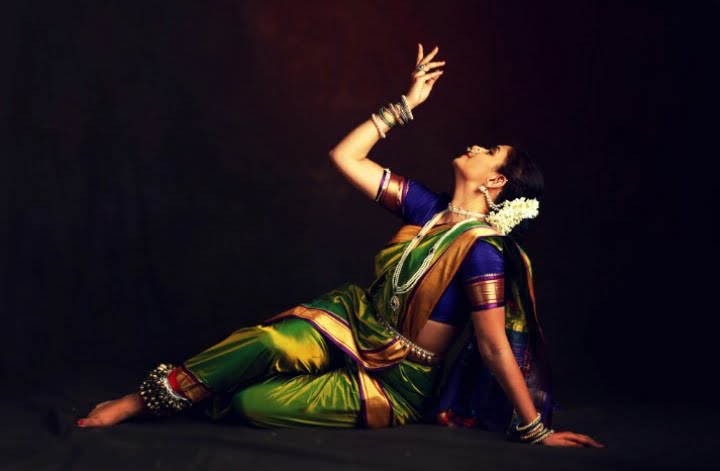
Lavani dance is essentially a musical dialogue, consisting of timber, song, tune, dance, and tradition. The beats of the dholak are lovely, combining dancing energy with jazz. The tempo of the Lavani is rapid and unifying, with dancers’ feet tapping to the beat.The word Lavani comes from the word ‘lavanya,’ which means ‘beautiful.’
Maharashtra was the birthplace of Lavani dance in the 18th and 19th centuries. This dance style was prominent during the Peshawari Dynasty in Pune. Dhangars or shepherds from Solapur, Maharashtra, were the most common performers of the Lavani dance.
Lavani is a Maharashtra, India-based music genre. It is a fusion of traditional singing and dance, performed to the beats of a percussion instrument called the Dholki. The forceful beat of Lavani is well-known. Lavani has made a significant contribution to the growth of Marathi folk theatre. It is done by female performers dressed in nine-yard long sarees in Maharashtra and southern Madhya Pradesh. The songs are sung at a fast pace.
Koli
Koli is a Maharashtra dance genre performed by the Koli fisher folk. The community has a distinct character as well as colourful dances. The dance contains elements that are most known to this culture, such as the sea and fishing.
Dancers perform to popular songs such as Me Dolker, Aga Pori Sambhaal, Dol Doltai, Paru Go Paru, and Valav Re Nakva. The crowd enjoys through the dance and expresses their delight by whistling and generally has a good time. Women hop between sticks held by men in another form of the Koli dance.
Koli is a dance which is performed by both men and women. They usually stand in pairs or form a single line. The fisherman stand in a row, clutching their oars, while the ladies form a separate row, joining their arms and approaching the men folk in a charming manner in one of the forms.
As the music’s rhythm builds to a crescendo, the men and women’s separation gives way to them dancing in harmony. The reproduction of rowing boats, the movement of waves, and the process of collecting fish is one of the most prominent features of this dance. The style of the dance varies depending on the locality.
Tamasha
Tamasha is a popular folk art that began in rural Maharashtra and was created to entertain the masses, primarily labourers and farmers, similar to the Bengal Jatra. Ram Joshi, a guy fluent in Sanskrit and Marathi, established Tamasha in the 18th century. Joshi and another well-known Marathi writer, Moropanta, developed a style of singing known as Lavani, which is central to Tamasha.
It is a type of theatre that emphasises song and dance. It is famous for double-meaning lyrics, mild sensual themes, and dance moves, for which the Maharashtrian wealthy elite have a propensity to look down on this folk art. T
Tamasha has two types: Dholki bhaari and Sangeet baari. The latter of which is the oldest of the two and features more songs and dances than theatrics.
Povadas
Povadas, a Marathi poetry genre, emerged in the second half of the 17th century. Shahirs are the singers or narrators of Povadas. This narrative musical performance, which resembles ballads, is frequently based on significant historical events in order to evoke devotional, heroic, and other such feelings in people or audiences. Because of the growing popularity of Maharashtra’s folk dance, social and political issues have become a component of these performances.
Men wear angarakhas or long, straight-cut kurtas and salwars with a colourful waistband in this narrative song-dance performance. They also wear turbans. The enacting Shahir receives vocal, instrumental, and musical accompaniment from Jhilkari. Further, they play music with small drums, cymbals, tambourine, and tuntune while the singer sings and dances. A little prayer honouring the Hindu God Ganesha is recited at the start of the performance.
Share with your friends

